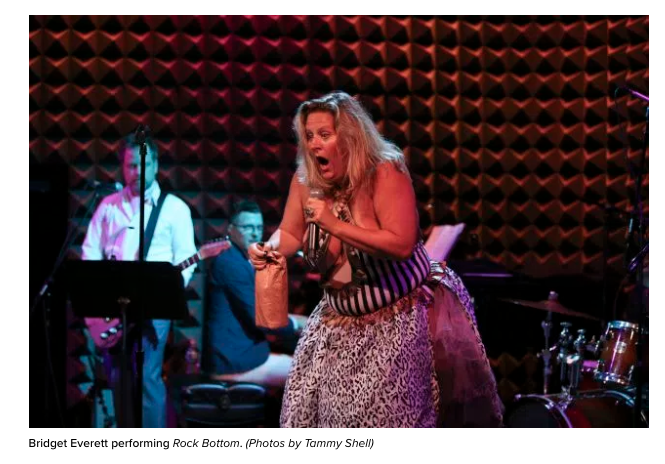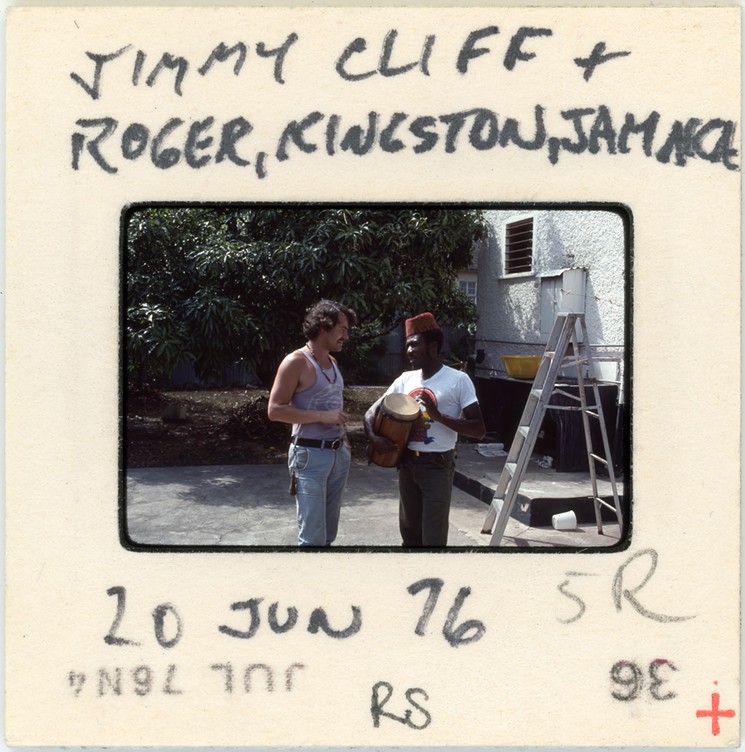I sat down for a latte with Rachel Antonoff at Café Grumpy in Chelsea on a Wednesday afternoon. Antonoff has been busy preparing for her Spring 2014 fashion line and video, traveling back and forth to Los Angeles, and generally being a busy, young fashion designer.
Antonoff grew up in central New Jersey, and attended the Professional Children’s School in New York City. After realizing at a young age that theater wasn’t her calling, she went on to pursue writing, and soon after that she began to dabble in fashion. She sent some photos of her and a friend’s designs, wide-eyed and naive, to Teen Vogue, and the rest is history.
She greeted me with a hug. We had both just attended weddings with no plus-one invite, so the conversation began from there. We went on to discuss siblings (her brother is Jack Antonoff of Fun, who happens to date Girls’ Lena Dunham), neighborhoods, and her likes and dislikes.
Her Spring 2014 lookbook will premiere on Style.com’s Video Fashion Week, next week, and her video for the line will be available on her website.
Were you always into fashion? What led you to become a designer?
Not at all. I actually always and still do have a list of things I want to do and be. And weirdly enough this was not even on that list. I fell into it really late, sort of, in terms of when people find their careers. I really wanted to be a writer, actually. I was freelance writing around the city, and of course, I always loved clothes. Now I know that I was always designing, I just didn’t realize that’s what I was doing.
I design best when I’m jogging, usually, when I just daydream. And what I’m wearing in the daydreams is what I try to extract and make. And now I know that that’s my process.
What’s your favorite article of clothing?
I am drawn to dresses because they’re easy, and I’m actually not a great stylist, which is interesting. I really don’t have a solid idea of what to put with what. I don’t ever feel like one of those people who looks put together, so a dress is an easy way to accomplish that. But really, especially now that I work in this field, I mostly want to be really comfortable all the time. I don’t do well with middle ground. I either go all the way with something or not at all. So I’d rather not try at all and wear sweats, which is why our sweatshirts came out and it’s working out well.
They are super cute. What’s the vision behind your Spring 2014 collection?
Thank you. Spring 2014 is themed “crush” and we are editing the video right now which will premiere on Style.com’s video fashion week, next week. I’m really excited about it, and my video as well. It’s all sort of inspired by the feeling of having a crush and how you think about what you want to wear for your crush.
There’s a song “He’s a Rebel,” by The Crystals. Maybe it’d be a good fit for your video.
Sounds amazing. I’m going to write it down. We’re actually scoring this right now so maybe it will work out.
Your collections are inspired by a variety of eras, most notably the ’50s, ’60s, and ’70s. If you could go back in time, which era would you live in and why?
Style-wise or life-wise?
Both.
Well life-wise, to be honest, as a woman, I think you’d have to be insane to live in any other era than this one. Or if I could choose the future, then hopefully that. I certainly wouldn’t want to go back in time when it comes to general civil rights and stuff like that.
But style-wise, I may have to continue with this time, only because it seems like in so many past eras, while the style for women was really fun to look at, it may not have been as fun to wear. I feel like it’s a common answer to say women just looked better, and you were expected to dress up. That’s exactly why I wouldn’t want to live there. I’d like to look at pictures of it, but I don’t think I’d want that responsibility everyday of having to.
You and Jack are a power sibling team. Is he your number one go-to for advice?
Always, yes. We’ve always talked about everything and advised each other on everything for as long as I can remember. So there’s extremely few things I can imagine in like that I would not seek out his advice on. If there is advice to be sought, his would be the first. He’s great.
What made you switch from runway shows to video?
The shows were getting really expensive and over the top, and again with not wanting to have to half weigh things, I would rather not do one, then to compromise. I guess that’s not my best attribute, but I know that what we were spending was a fraction of what most people spend on presentations, and it was still through the roof. We had to realistically look and ask, are we increasing sales by having these? What really is the value? How else could we accomplish this? And Lena [Dunham] had the great idea for the video, and I loved the idea. And so at first I thought maybe I should do that and a show, but we should definitely do that. But then the more I thought about it, I figured we should take our funds and use them in one place and really make it great. I felt really disappointed at first, sort of like it was admission to failure. But then as we filmed the video and then when I saw it I realized it was actually, a video is a presentation that lasts forever.
I love that you use your mom, grandmother, and friends in your videos and presentation as models, displaying all shapes and sizes. It brings a realism to fashion that most people designers don’t. I wonder if you did runway still, if that would be different.
Thank you. Right, I don’t know, I mean I have a lot of issues with that. I feel like fashion is the same as any other creative art and for some reason its one of the only of the creative arts that’s viewed in this totally eye roll inducing fluffy, stupid way. I think a lot of it is unwarranted, but then there’s so much that goes on within fashion—for the most part we’re not doing ourselves any favors, to dispel this “Zoolander-ish” persona. And obviously it’s an age-old thing with the weight and size issue, but it is such a problem; it’s so gross, and I just don’t want to play any part in it.
Describe Rachel Antonoff’s “girl”?
I think she has been every girl, which kind of ties in to what we just talked about. I really like the idea that there are things my mom could wear, my grandmother could wear, and more specifically, I think the Rachel Antonoff girl definitely doesn’t take fashion too seriously. It’s not an elitist thing, its just fun, and about feeling good about yourself, as well as dressing for yourself.
What music are you into?
So much! I’ve always loved Broadway musicals and still listen to a lot of that. You know who I just discovered? Sky Ferreira. Have you heard any of her music?
Ummm…heard of her, but not really.
I know! I hadn’t either, because, exactly. That was my thought on the way to this wedding last weekend. It wouldn’t have even occurred to me to listen to her songs, and then for some reason it did. I listened to two of her songs, an old single and a new, and I don’t understand why she’s not hailed as a genius artist of our time!
What’s your favorite Broadway show?
Pippin. What’s yours?
Gypsy.
That’s probably my second favorite.
Favorite designers?
Miu Miu, Mary Benson, Melissa Coker for Wren, Band of Outsiders and Chanel.
Are you spiritual, and what’s your relationship with Judaism?
I am spiritual, I have to say, though, I’m not very religiously inclined, specifically. I guess I have to affiliate myself somewhere between agnostic and a humanist. I think whats here on the planet is magical enough and amazing. I don’t know what I believe regarding other things, but I feel so open to it. I do love the culture of Judaism. We observed holidays and went to Solomon Schechter. My mom grew up “Conservadox” and my dad grew up Reform, and we were somewhere in between.
Permalink: Jewcy













